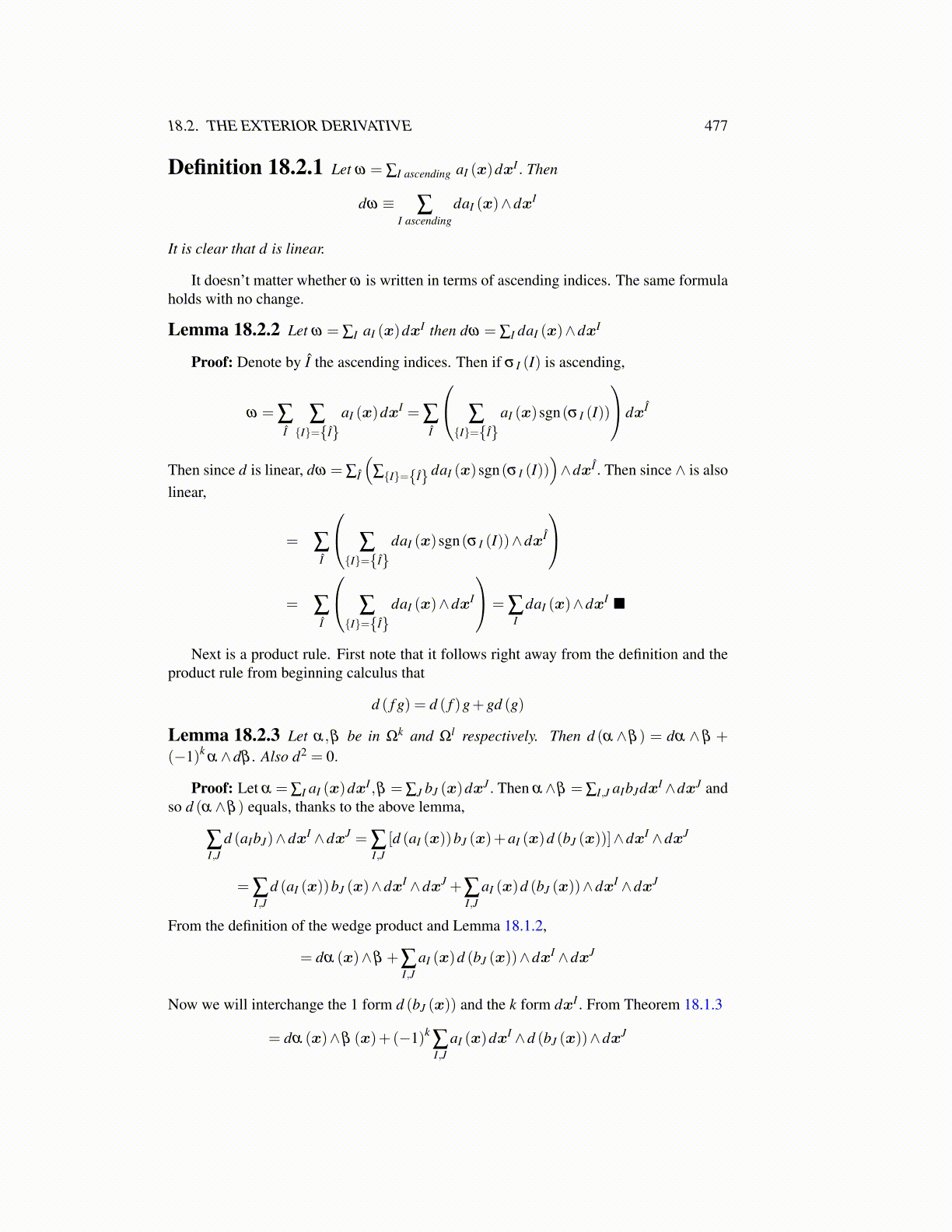
18.2. THE EXTERIOR DERIVATIVE 477
Definition 18.2.1 Let ω = ∑I ascending aI (x)dxI . Then
dω ≡ ∑I ascending
daI (x)∧dxI
It is clear that d is linear.
It doesn’t matter whether ω is written in terms of ascending indices. The same formulaholds with no change.
Lemma 18.2.2 Let ω = ∑I aI (x)dxI then dω = ∑I daI (x)∧dxI
Proof: Denote by Î the ascending indices. Then if σ I (I) is ascending,
ω = ∑Î
∑{I}={Î}
aI (x)dxI = ∑Î
∑{I}={Î}
aI (x)sgn(σ I (I))
dxÎ
Then since d is linear, dω = ∑Î
(∑{I}={Î} daI (x)sgn(σ I (I))
)∧dxÎ . Then since ∧ is also
linear,
= ∑Î
∑{I}={Î}
daI (x)sgn(σ I (I))∧dxÎ
= ∑
Î
∑{I}={Î}
daI (x)∧dxI
= ∑I
daI (x)∧dxI ■
Next is a product rule. First note that it follows right away from the definition and theproduct rule from beginning calculus that
d ( f g) = d ( f )g+gd (g)
Lemma 18.2.3 Let α,β be in Ωk and Ωl respectively. Then d (α ∧β ) = dα ∧ β +
(−1)kα ∧dβ . Also d2 = 0.
Proof: Let α = ∑I aI (x)dxI ,β = ∑J bJ (x)dxJ . Then α∧β = ∑I,J aIbJdxI∧dxJ andso d (α ∧β ) equals, thanks to the above lemma,
∑I,J
d (aIbJ)∧dxI ∧dxJ = ∑I,J
[d (aI (x))bJ (x)+aI (x)d (bJ (x))]∧dxI ∧dxJ
= ∑I,J
d (aI (x))bJ (x)∧dxI ∧dxJ +∑I,J
aI (x)d (bJ (x))∧dxI ∧dxJ
From the definition of the wedge product and Lemma 18.1.2,
= dα (x)∧β +∑I,J
aI (x)d (bJ (x))∧dxI ∧dxJ
Now we will interchange the 1 form d (bJ (x)) and the k form dxI . From Theorem 18.1.3
= dα (x)∧β (x)+(−1)k∑I,J
aI (x)dxI ∧d (bJ (x))∧dxJ